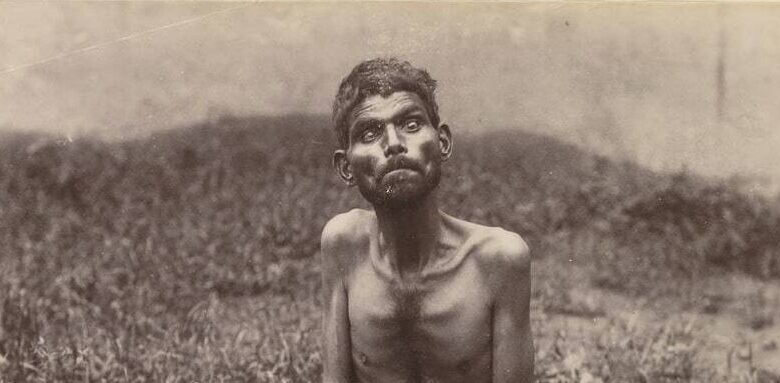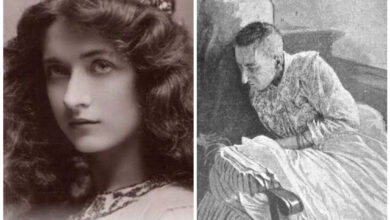
Dina Sanichar: the Tragic Story of the Real-Life Mowgli
The Jungle Book is probably one of the most requested books by children at bedtime. It features Mowgli, a child lost in the jungle, rescued by a panther and raised by wolves. Eventually, his animal friends in the jungle realise that it is too dangerous for Mowgli to stay, so they return him to a village.
So far, so happy ending. But what parents may not know is that the story of Mowgli is based on a real-life person. Dina Sanichar, as he become known, was found alone in the jungle, living in a cave. He was captured by hunters and raised in an orphanage.
It is believed that Rudyard Kipling based the Jungle Book upon hearing Dina’s story. But unlike the Disney version, this true-life story does not have a moral or a happy ending.
Who was Dina Sanichar?

In India in 1867, a group of hunters roamed the jungle in the Bulandshahr district in Uttar Pradesh, searching for a prize game. A clearing appeared in front of them and they saw a cave in the distance. The hunters cautiously approached the cave, ready for whatever was inside.
But what they saw baffled them. At the entrance of the cave was a young boy, no more than 6 years old. The hunters were worried for the boy, so they took him to the nearby Sikandra Mission Orphanage in Agra.
The missionaries named him Dina Sanichar, which means ‘Saturday’ in Hindi; the day he arrived. However, it soon became clear that this was no normal little boy who had simply gotten lost in the jungle.
In Disney’s Jungle Book, Mowgli was surrounded by wild animals; some befriended him, and others wanted to kill him, but they all talked. In real life, Dina was a feral child who had survived amongst wild animals. It was believed he had no human contact.
As such, Dina did not act like a little boy. He walked on all fours, would only eat raw meat and chewed on bones to sharpen his teeth. His only form of communication consisted of growling or howling. It was during this time some of the missionaries named him ‘Wolf Boy’, as he acted more like an animal than a human.
Dina Sanichar’s life at the orphanage

The orphanage tried to teach Dina Sanichar sign language, something certain primates are capable of learning. As well as sign language, the missionaries would point at certain objects, in the hope that Dina would begin to learn the names of things.
After all, even dogs know that it is the direction of the pointed finger that is important. But dogs are domesticated and have learnt by watching human behaviour for thousands of years.
Wolves are wild animals and do not point themselves. Therefore, it was virtually impossible to teach Dina how to speak or understand language of any kind. This is not unsurprising.
Research shows there is a definite time frame for humans to learn a language. Although the mechanics are all there from birth, the brain has to be stimulated during a critical window. This critical window for language acquisition begins to shut down at 5 years old.
You only have to look at the case of Genie, the abused child who was kept locked away until 13 years old and never learned to speak properly.
However, slowly Dina began to understand the missionaries, and undoubtedly, this made his life easier. But he never learned to speak. He did begin to stand upright and gradually he learned to walk on two feet.
Dina would also dress himself and even started smoking; a habit he kept (and some say contributed) until his death.
Feral children were common in Indian orphanages
Because of Dina’s childhood, living wild in the jungle, it was unlikely that he would make any friends at the orphanage. However, wild wolf children were not uncommon in that part of the world. In fact, in some areas, they were the norm.
The superintendent of the orphanage, Father Erhardt Lewis, said that at one time the orphanage was taking in so many wolf children that it “created no more surprise than the delivery of the daily supply of butcher’s meat.”
Father Erhardt noted his observations of the wolf children in writing to a colleague:
“The facility with which they get along on four feet (hands and feet) is surprising. Before they eat or taste any food they smell it, and when they don’t like the smell they throw it away.”
So, Dina Sanichar was no longer a person of interest; he was just one of many.
Luckily for Dina, he was not the only feral child staying at this particular orphanage during his time there. The Sikandra Mission Orphanage had taken in two other boys and a girl.
Dina became friends with one of the boys. He created a strong bond with this other boy, probably because they had similar backgrounds. Maybe because they understood one another.
Father Erhardt observed:
“A strange bond of sympathy attached these two boys together, and the elder one first taught the younger to drink out of a cup.”
Much like Blanche Monnier, the woman who was trapped in an attic for 25 years, Dina Sanichar never fully integrated into human life. His growth was stunted (he never grew more than 5 feet tall), his teeth were overgrown and his forehead looked like a Neanderthal’s. He was wary of humans all his life and became nervous when approached by strangers.
Dina was just 29 years old when he died of tuberculosis. Who knows if he could have lived longer if he had remained in the jungle. After all, he had managed to stay alive as a child, living in a harsh and dangerous environment.
Final thoughts
The removal of Dina Sanichar from the jungle begs the question, what is the right way to help a child in this situation? The answer is certainly not an orphanage.
Children who have had no human contact need one-on-one specialist care if they are ever going to live a relatively normal life.
References:
- indiatimes.com
